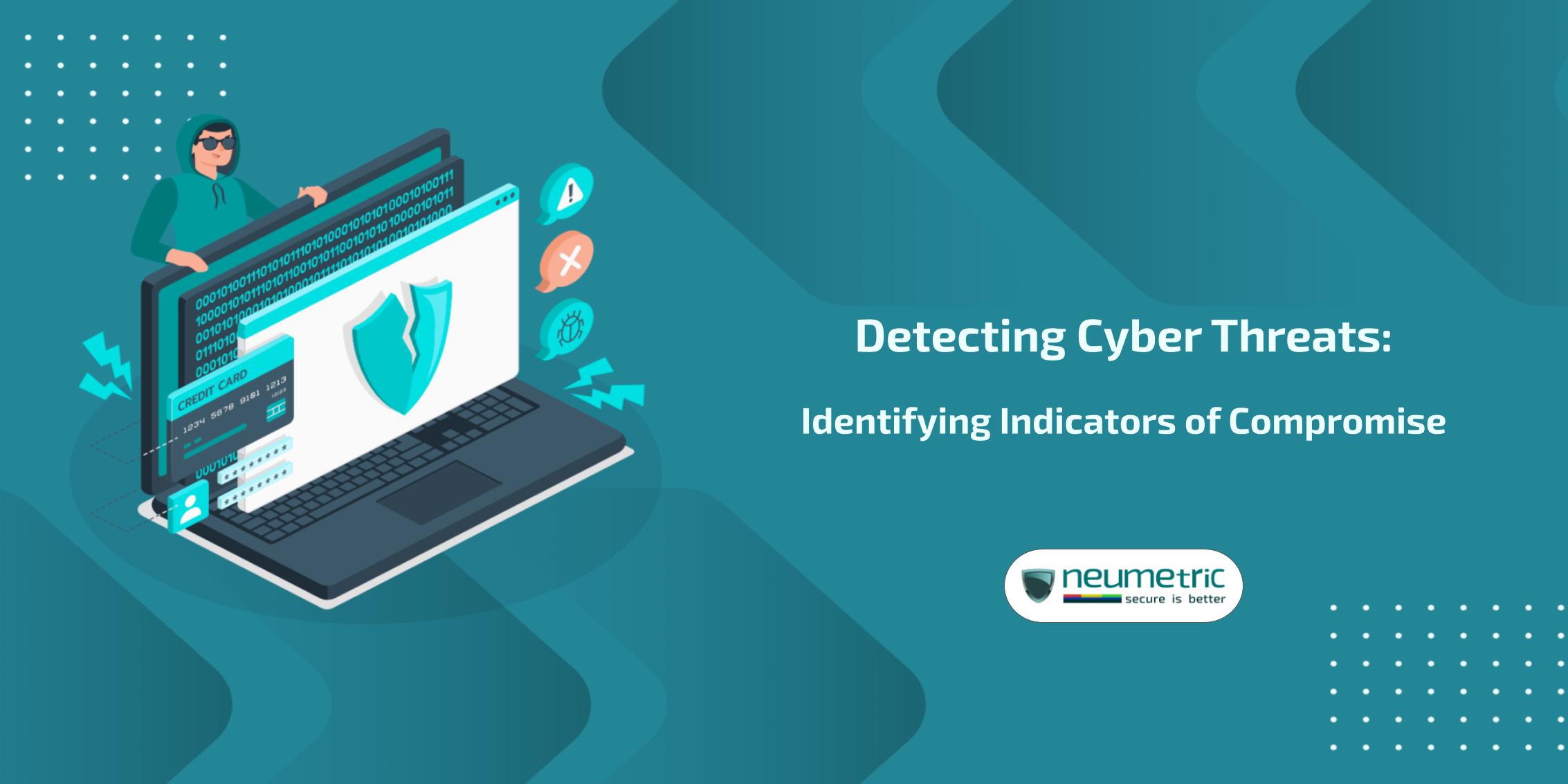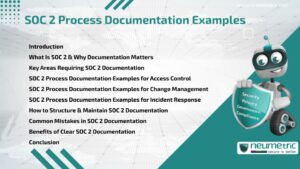Table of Contents
ToggleIntroduction
As businesses & individuals alike navigate the digital world, a single breach can unleash a torrent of consequences, from crippling financial losses to irreparable reputational damage. In this high-stakes game of cat & mouse, the ability to detect & respond to cyber threats swiftly is extremely important. The concept of Indicators of Compromise [IoCs] are the digital breadcrumbs left behind by malicious actors, offering invaluable insights into potential breaches & enabling proactive defense strategies.
Understanding Indicators of Compromise
Indicators of Compromise [IoCs] are forensic artifacts that signify the presence of a cyber threat or malicious activity within a network or system. These indicators can take various forms, ranging from suspicious network traffic patterns to unusual file modifications or even subtle changes in system behavior. By identifying & analyzing these telltale signs, cybersecurity professionals can uncover potential threats, mitigate risks & fortify their defenses against future attacks.
Types of Indicators of Compromise
Indicators of Compromise can manifest in a variety of forms, each offering a unique perspective into the nature & scope of a potential threat. Some common types of Indicators of Compromise include:
- IP Addresses: Malicious IP addresses associated with known threat actors, botnets or Command-and-Control [CnC] servers.
- File Hashes: Unique digital fingerprints of malicious files, such as malware or ransomware payloads.
- Domain Names: Suspicious domain names used for phishing campaigns, malware distribution or Command-and-Control [CnC] infrastructure.
- Network Traffic Patterns: Anomalous network traffic patterns indicating potential data exfiltration or command-and-control communication.
- System Logs: Unusual entries in system logs, potentially indicating unauthorized access or malicious activities.
The Importance of Timely Detection
Timely detection of Indicators of Compromise [IoCs] is crucial in mitigating the impact of cyber threats. Every second counts when it comes to responding to a potential breach or attack. By identifying Indicators of Compromise [IoCs] early, organizations can swiftly implement containment measures, minimize data loss & prevent further exploitation of their systems & networks.
Moreover, the ability to detect Indicators of Compromise [IoCs] empowers organizations with invaluable intelligence. By analyzing the nature & origin of these indicators, cybersecurity teams can gain insights into the tactics, techniques & procedures [TTPs] employed by threat actors, enabling them to develop more robust defense strategies & stay ahead of emerging threats.
Implementing an Effective IoC Detection Strategy
Detecting Indicators of Compromise [IoCs] is a multifaceted endeavor that requires a comprehensive approach, leveraging a combination of technological solutions, skilled analysts & well-defined processes. Here are some key components of an effective IoC detection strategy:
Continuous Monitoring & Log Analysis
Continuous monitoring of network traffic, system logs & user activity is essential for identifying potential Indicators of Compromise [IoCs]. By implementing robust log management & analysis solutions, organizations can uncover anomalies, suspicious patterns & deviations from baseline behavior, all of which may indicate the presence of a cyber threat.
Threat Intelligence Integration
Integrating threat intelligence feeds from reputable sources can provide organizations with up-to-date information on known Indicators of Compromise [IoCs], enabling them to proactively search for & mitigate potential threats. Threat intelligence platforms offer access to a vast repository of Indicators of Compromise [IoCs], including malicious IP addresses, file hashes & domain names, empowering organizations to stay ahead of emerging threats.
Automated Detection & Response
While human analysts play a crucial role in Indicators of Compromise [IoCs] detection, automation can significantly enhance the efficiency & effectiveness of the process. By leveraging advanced security solutions with built-in IoC detection capabilities, organizations can automate the identification & analysis of potential threats, enabling faster response times & reducing the risk of human error.
Skilled Cybersecurity Professionals
Ultimately, the success of an IoC detection strategy hinges on the expertise & vigilance of skilled cybersecurity professionals. Experienced analysts with a deep understanding of threat actor behavior, cyber kill chains & advanced persistent threats [APTs] are instrumental in identifying & interpreting IoCs, as well as developing targeted mitigation strategies.
Challenges & Considerations
While the detection of Indicators of Compromise [IoCs] is crucial in combating cyber threats, it is not without its challenges. Some key considerations & challenges include:
False Positives & False Negatives
One of the primary challenges in IoC detection is striking the right balance between identifying true positives & minimizing false positives & false negatives. False positives can lead to wasted resources & unnecessary disruptions, while false negatives can leave organizations vulnerable to undetected threats.
Constantly Evolving Threats
The cyber threat landscape is in a constant state of flux, with threat actors continuously adapting their tactics & techniques to evade detection. As a result, IoC detection strategies must be regularly updated & refined to keep pace with emerging threats & maintain their effectiveness.
Data Privacy & Compliance
In the pursuit of IoC detection, organizations must navigate a complex web of data privacy regulations & compliance requirements. Striking the right balance between maintaining robust cybersecurity measures & protecting sensitive data is a delicate dance that requires careful consideration & adherence to industry best practices.
Resource Constraints
Implementing & maintaining an effective IoC detection strategy can be resource-intensive, requiring significant investments in technology, personnel & training. Organizations must carefully assess their risk posture, prioritize their cybersecurity initiatives & allocate resources accordingly.
Real-World Examples & Case Studies
To illustrate the significance & impact of IoC detection, let’s explore a few real-world examples & case studies:
The WannaCry Ransomware Attack
In May’17, the WannaCry ransomware attack swept across the globe, infecting computers in over one hundred and fifty (150) countries & causing billions of dollars in damages. The early detection of IoCs, such as specific file hashes & network traffic patterns, played a crucial role in containing the spread of the attack & mitigating its impact.
The SolarWinds Supply Chain Attack
The SolarWinds supply chain attack, discovered in Dec’20, highlighted the importance of IoC detection in identifying & responding to sophisticated advanced persistent threats [APTs]. By analyzing IoCs like malicious code insertions & suspicious network communications, cybersecurity experts were able to uncover the extent of the breach & take proactive measures to address the vulnerabilities.
The Equifax Data Breach
In 2017, the Equifax data breach exposed the personal information of over one hundred and forty seven (147) million individuals, leading to massive financial & reputational consequences for the company. Post-breach analysis revealed that the presence of IoCs, such as suspicious network traffic & unauthorized file modifications, could have potentially enabled earlier detection & mitigation of the attack.
These real-world examples shows the critical role that IoC detection plays in safeguarding organizations against cyber threats, minimizing damages & maintaining business continuity.
Conclusion
In the high-stakes world of cybersecurity, the detection of Indicators of Compromise [IoCs] serves as a powerful tool in the ongoing battle against cyber threats. By understanding the nature of IoCs & implementing effective detection strategies, organizations can gain invaluable insights into potential breaches, mitigate risks & fortify their defenses.
As explored, IoCs come in various forms, from suspicious network traffic patterns to unusual file modifications, each offering a unique perspective into the nature & scope of a potential threat. By leveraging continuous monitoring, threat intelligence integration & advanced automation technologies, organizations can stay one step ahead of malicious actors, swiftly identifying & responding to potential threats before they can cause widespread damage.
However, it is important to remember that Indicator of Compromise [IoC] detection is not a panacea; it is one crucial component of a multifaceted cybersecurity strategy. Challenges such as false positives, constantly evolving threats, data privacy concerns & resource constraints must be carefully navigated to ensure the effectiveness & sustainability of IoC detection efforts.
Ultimately, the success of a Indicators of Compromise [IoCs] detection strategy hinges on the expertise & vigilance of skilled cybersecurity professionals, who possess a deep understanding of threat actor behavior, cyber kill chains & advanced persistent threats [APTs]. By fostering collaboration, sharing intelligence within trusted communities & continuously evolving their strategies, these professionals can stay ahead of the curve & safeguard their organizations against the ever-present threat of cyber attacks.
The ability to detect & respond to Indicators of Compromise will remain a critical line of defense, enabling organizations to fortify their defenses, mitigate risks & maintain business continuity in the face of ever-evolving cyber threats.
Key Takeaways
By understanding the importance of Indicators of Compromise [IoCs] & implementing effective detection strategies, organizations can fortify their defenses & mitigate the risks posed by malicious actors. Here are the key takeaways from our comprehensive journal:
- Understand the Landscape: Familiarize yourself with the different types of Indicators of Compromise [IoCs], including IP addresses, file hashes, domain names, network traffic patterns & system logs. Recognizing these indicators is the first step in identifying potential threats.
- Implement Continuous Monitoring: Continuous monitoring & log analysis are essential for detecting IoCs in real-time. Leverage robust log management & analysis solutions to uncover anomalies & suspicious patterns.
- Leverage Threat Intelligence: Integrate threat intelligence feeds from reputable sources to stay informed about known IoCs & emerging threats. This proactive approach empowers organizations to swiftly identify & mitigate potential risks.
- Automate & Streamline: Implement advanced security solutions with built-in IoC detection capabilities to automate the identification & analysis processes, enabling faster response times & reducing the risk of human error.
- Invest in Skilled Professionals: Skilled cybersecurity professionals with expertise in threat actor behavior, cyber kill chains & advanced persistent threats [APTs] are instrumental in interpreting IoCs & developing targeted mitigation strategies.
- Continuously Evolve: The cyber threat landscape is ever-changing, requiring organizations to regularly update & refine their IoC detection strategies to keep pace with emerging threats & maintain their effectiveness.
- Collaborate & Share Intelligence: Foster collaboration & intelligence sharing within trusted communities & platforms, adhering to standardized formats & implementing robust data governance practices.
Remember, detecting IoCs is a critical component of a comprehensive cybersecurity strategy, but it is not a silver bullet. Continuous vigilance, adaptability & a proactive approach are essential to staying ahead of the curve & safeguarding your organization against the ever-present threat of cyber attacks.
Frequently Asked Questions [FAQ]
What is the difference between an Indicator of Compromise [IoC] & an Indicator of Attack [IoA]?
While IoCs & IoAs are closely related, they differ in their nature & scope. IoCs are forensic artifacts that indicate the presence of a cyber threat or malicious activity, while IoAs specifically refer to indicators that suggest an active attack or ongoing exploitation of a system or network.
Can IoCs be used to attribute attacks to specific threat actors?
IoCs can provide valuable insights into the tactics, techniques & procedures [TTPs] employed by threat actors, which can aid in attribution efforts. However, attribution is a complex process that often requires a combination of technical analysis, intelligence gathering & geopolitical context.
How frequently should IoC detection processes be updated?
IoC detection processes should be regularly updated & refined to keep pace with the ever-evolving cyber threat landscape. Ideally, organizations should review & update their IoC detection strategies on a periodic basis, incorporating new threat intelligence, addressing emerging vulnerabilities & adapting to changing attack vectors.
Can Machine Learning [ML] & Artificial Intelligence [AI] be leveraged for IoC detection?
Absolutely. Machine learning [ML] & Artificial Intelligence [AI] techniques can be highly effective in analyzing vast amounts of data, identifying patterns & detecting anomalies that may indicate the presence of IoCs. However, it is important to note that these technologies should be used in conjunction with human expertise & oversight, rather than as a complete replacement.
What are some best practices for sharing & consuming IoC intelligence?
To maximize the effectiveness of IoC detection efforts, it is crucial to share & consume IoC intelligence within trusted communities & platforms. Best practices include adhering to standardized formats (e.g., STIX, TAXII), verifying the authenticity & reliability of sources & implementing robust data governance & access controls.





